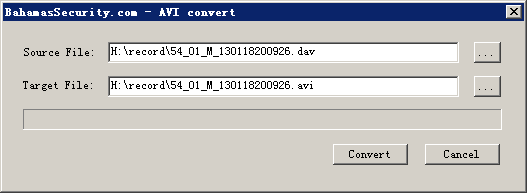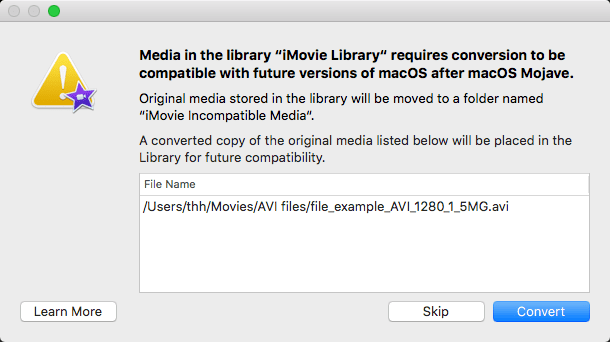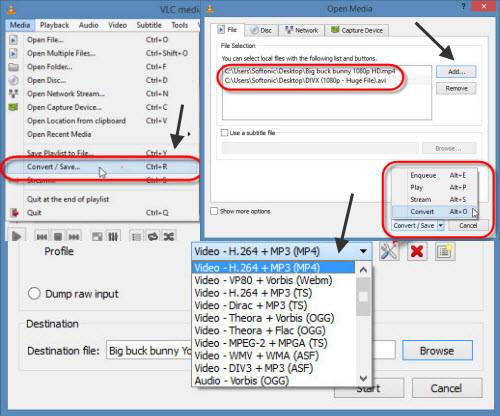

With FFmpeg, a command line tool can be used to convert and compress the desired multimedia files. Some of the supported functions of this cross-platform tool include demux, decode, encode, stream, play, compress, and others.
#Convert avi to mp4 mac command line how to
How to Use FFmpeg to Resize VideoįFmpeg is a free to use software project that comes with an array of programs that facilitates handling video, audio, and other multimedia files.

The files on the software interface can be managed from the Converted tab. Finally, click on the Convert All button to start compressing all the added files. Click on the Save button to confirm the settingsĪt Output section, browse and select the location to save the processed files. Here select file parameter values related to the bit rate, resolution, frame rate, and others so as to reduce the file size. Next, hit on the +Create Custom button and a setting window will open. From the window, select the desired target format from the Video tab. Next, on the top right-hand side, click downward facing arrow and open the drop-down menu. Select target format and settings for compression You can personalize and customize the files as needed. Click on one of the icons and a new window to make changes will appear. Under the thumbnail image, the icons for editing are present. Tips: The files once added will appear on your software page. Compression process can be achieved through file conversion, parameters editing, and cutting the parts of the video not needed. There is an option to compress single or multiple files in batches as needed.
#Convert avi to mp4 mac command line professional
This professional software works as a complete video-toolbox and allows performing a wide range of functions like compression, conversion, video download, video recording, disc burning, and others. The best alternative to FFmpeg for video compression is UniConverter. Best Way to Compress Videos with UniConverter

Know more in detail about how to resize video with FFmpeg and without FFmpeg. The framework is compatible with Linux, Windows, Mac, Solaris, and other OS and also supports video compression. When using direct file input from command line, we pass the -i filename option to FFmpeg and then it's super fast!īe careful when |piping.FFmpeg allows decoding, encoding, streaming, playing, filtering and performing other functions related to multimedia files. Why? Because piping 3.4GB when you want to cut from 40:20 to 40:22 still takes a loooooot of time and does not give you any performance benefit.įFmpeg has to read from 0GB -> $START_BYTE_40:20 and discards it. While it's super useful in some cases, if you have the file on disk already, you better do gifify movie.mp4 -o out.gif or gifify(filePath, opts).pipe(writableStream). Gifify supports streams both on command line ( cat movie.mp4 | gifify -o out.gif) and in the programmatic API ( gifify(readableStream, opts).pipe(writableStream)). You can also pass a readable stream to gifify(stream, opts). createWriteStream ( output ) var options = gifify ( input, options ). join ( _dirname, 'movie.gif' ) var gif = fs. join ( _dirname, 'movie.mp4' ) var output = path. Var fs = require ( 'fs' ) var gifify = require ( 'gifify' ) var path = require ( 'path' ) var input = path.


 0 kommentar(er)
0 kommentar(er)
